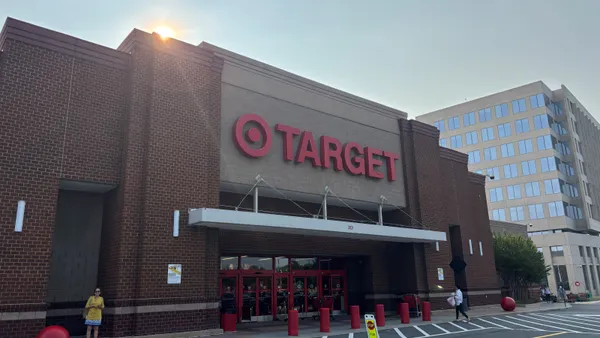Dive Brief:
-
Traffic to outlet malls is at a two-year peak, with 26% of shoppers in the U.S. heading to an outlet in July 2016—up four percentage points since March, when outlet traffic hit its lowest point since June 2015—according to Cowen Consumer Tracker Survey data cited by CNBC.
-
Millennials’ thrifty ways influenced the acceleration, with sportswear outlet stores including Nike, Adidas and Under Armour among the biggest beneficiaries of the renewed customer activity, according to Footwear News.
-
But Cowen notes that outlet malls are vulnerable to many of the same pressures as retailers in general: Too many stores, competition from off-price stores like those under the TJX umbrella, heavy discounting at department stores and elsewhere, and the strong dollar.
Dive Insight:
Two-thirds of U.S. shoppers spend at off-price retailers in search of bargains, according to a report released in July by NPD Group’s Checkout Tracking data service, which measures consumer buying behavior. That’s led several retailers to jump on the off-price trend. They include department stores like Nordstrom—whose Nordstrom Rack has operated since the 1970s—and discount department retailer Kohl’s, which last year launched an off-price pilot. Macy’s started its Backstage off-price effort last year as well, and Gap has expanded its fleet of outlet stores amid a rash of store closings.
Tourists have also long helped boost outlet malls, but the strong dollar has kept them away in recent months. “Brands, retailers and REIT operators continue to report mixed outlet traffic results in Q2 due to tourism,” Cowen analyst John Kernan wrote, according to Footwear News.
Although the Cowen study didn’t factor in the impact of foreign shoppers, Cowen analysts Kernan and Oliver Chen added "Directionally, we think that the negative impact from the stronger U.S. dollar on tourist travel and spending could start to ease in [the second half of 2016] as these centers begin to lap easier traffic comparisons."
If tourists come back, that could help many of the brands with outlet stores, especially luxury brands, that have seen sales suffer at their outlets. CNBC notes that Kate Spade in its second-quarter report said that even outlet stores were forced into deeper-than-anticipated discounts, though Coach has eased up on promotions in all channels, including outlet stores.
Outlet stores and off-price retailers like TJX and Nordstrom Rack benefit not just from low prices but also a treasure hunt atmosphere—the finds waiting to be discovered there at lower prices. As such stores proliferate, retailers and brands are under pressure to stock more goods that are specially made for the outlets—a practice that has drawn the ire of many shoppers and even some consumer watchdogs and regulators. Plus, retailers and brands also risk cutting into their own flagship sales as their customers learn to seek the better deal, a problem that Coach has worked hard to rectify.
“Factory stores can be a very profitable contributor to [direct to consumer] income but with changing consumer shopping behavior, an over-stored industry, extreme weather and persistent traffic headwinds, what was once a favorable channel could lose appeal in favor of online clearance and traditional off-price retailers, leading to an acceleration in store closings,” Kernan wrote.













